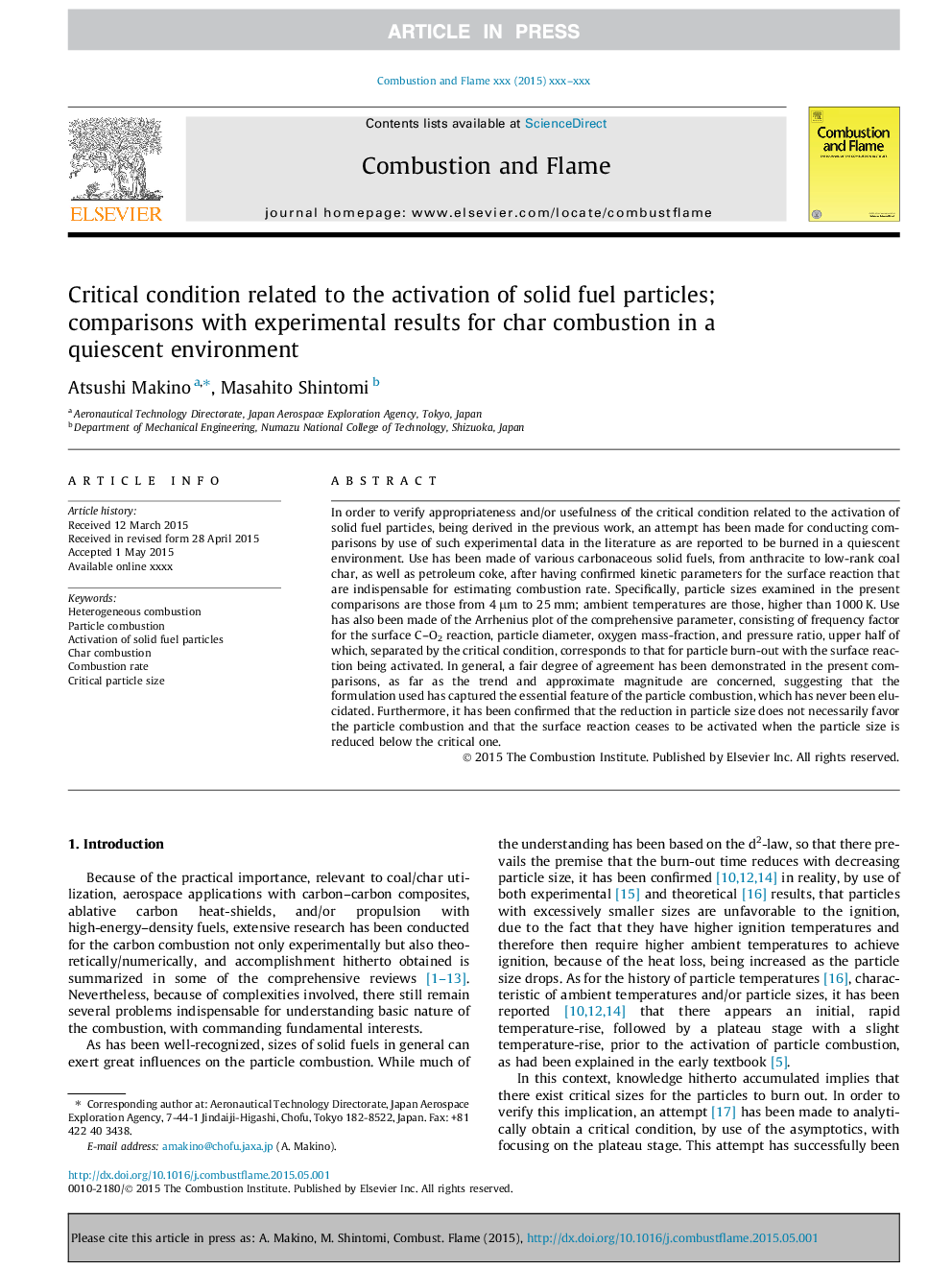| Article ID | Journal | Published Year | Pages | File Type |
|---|---|---|---|---|
| 10264602 | Combustion and Flame | 2015 | 10 Pages |
Abstract
In order to verify appropriateness and/or usefulness of the critical condition related to the activation of solid fuel particles, being derived in the previous work, an attempt has been made for conducting comparisons by use of such experimental data in the literature as are reported to be burned in a quiescent environment. Use has been made of various carbonaceous solid fuels, from anthracite to low-rank coal char, as well as petroleum coke, after having confirmed kinetic parameters for the surface reaction that are indispensable for estimating combustion rate. Specifically, particle sizes examined in the present comparisons are those from 4 μm to 25 mm; ambient temperatures are those, higher than 1000 K. Use has also been made of the Arrhenius plot of the comprehensive parameter, consisting of frequency factor for the surface C-O2 reaction, particle diameter, oxygen mass-fraction, and pressure ratio, upper half of which, separated by the critical condition, corresponds to that for particle burn-out with the surface reaction being activated. In general, a fair degree of agreement has been demonstrated in the present comparisons, as far as the trend and approximate magnitude are concerned, suggesting that the formulation used has captured the essential feature of the particle combustion, which has never been elucidated. Furthermore, it has been confirmed that the reduction in particle size does not necessarily favor the particle combustion and that the surface reaction ceases to be activated when the particle size is reduced below the critical one.
Keywords
Related Topics
Physical Sciences and Engineering
Chemical Engineering
Chemical Engineering (General)
Authors
Atsushi Makino, Masahito Shintomi,
